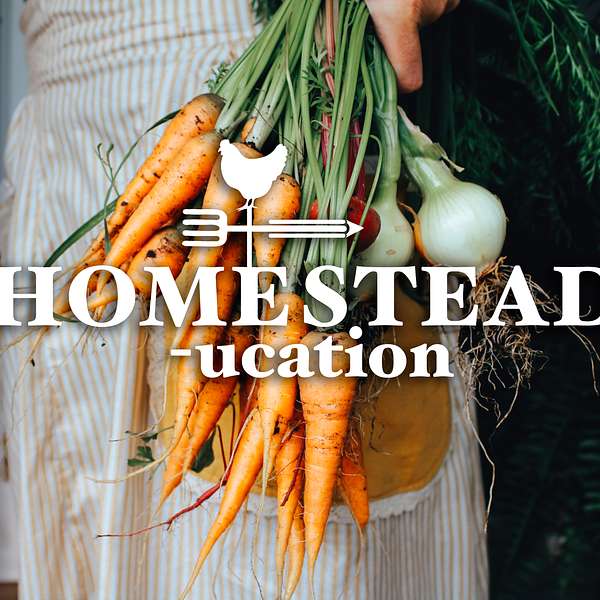
HOMESTEADucation
A podcast for those who are looking to slow down, return to their roots and feel more self-sufficient. Join Mandi Pickering of Wild Oak Farms, and Angela Ferraro-Fanning of Axe & Root Homestead in their new podcast HOMESTEADucation, created by homesteaders for homesteaders. This podcast will explore different facets of homesteading in detail including vegetable gardening, fruit orchard care, animal husbandry, and more. Follow us on Instagram: Angela @axeandroothomestead and Mandi @wildoakfarms
HOMESTEADucation
Companion Planting
What is companion planting?
It's one of the foundations of creating working ecosystems when it comes to permaculture. We can group plants together when planning and planting our growing spaces to help crops deter pests/disease, mine nutrients from the soil, and attract pollinators.
It's a way of creating a symbiotic relationship in your gardens, because the idea is the two plants (or more) that are companions are each providing to the other something that it cannot do. Or cannot do it alone. The plants are working together to benefit one another. Companion planting is also thought to “confuse” pests even when you are unable to cover or manage intensively.
It helps support plant diversity and actually helps you intensively manage a small space better. The key in fostering diversity is to increase the number of beneficial pests- thus decreasing the harmful ones.
Why companion plant?
The result is a higher crop yield, less human intervention by way of fertilizing and pest control, and maximizing garden space. These concepts can be applied to small spaces--even container gardens--to large environments like orchards. It's about getting away from mono-culture (planting rows upon rows of corn, for example) and planting many things together, called poly-culture.
For containers, raised beds or in-ground garden systems, here's some helpful companion plant combinations I use.
Tomatoes
Plant lettuce, carrots, radish underneath and around
Broccoli/Cauliflower
Plant broccoli and cauliflower between rows of garlic and/or sage to deter cabbage moths. Crimson clover acts a great living mulch to attract predatory insects to feed on those cabbage moth larvae also.
Cucumbers
Surround with radishes to deter cucumber beetles
Pumpkins/Squash
Sow 2-3 nasturtium seeds around each seedling after sprouting to deter squash bugs/borersMarigolds and Calendula
Use around borders to attract beneficial pollinators and deter rabbits- and they can add another thing to you homestead arsenal- you can make salves from the petals- they both are from the same family and have anti-inflammatory properties and more.
Roses
Interplant garlic around roses to deter fungal diseases (some folks say it also encourages a stronger fragrance from the rose blossoms!)
Peas
Peas give nitrogen to the soil so are great for heavy-feeding plants like tomatoes, corn, peppers, eggplant, and even potatoes
Strawberries
Interplant with mint to deter pests. Also interplant with borage to attract pollinators and enhance berry sweetness.
Nasturtium
Containing both edible foliage and flowers (and seeds-capers) it fairs well in less fertile soil. Great for pollinators and pest control- so we interplant this easy to grow trailing flower all over the garden.
Trap crops: the idea of planting crops to “sacrifice”. This aids in pest reduction for the plants you want to see to harvest. This is ideally done in close proximity to the plants you are trying to succeed with. For us- we do this with brassicas- greens etc. We will cover (with a lightweight summer cloth) the beds we want to protect and then leave a bed nearby uncovered and unkempt. The easiest form of trickery.
Plants that add nitrogen back into our soil:
It's no secret- your soil is alive. You want it to be its own little ecosystem right under your feet. We can help the soil (because then it turns around and helps us) by planting crops that are rich in nitrogen. Legumes - peas and beans are some of the more common plants homesteaders will grow for a harvest- and they are also helping improve the soil as they grow a